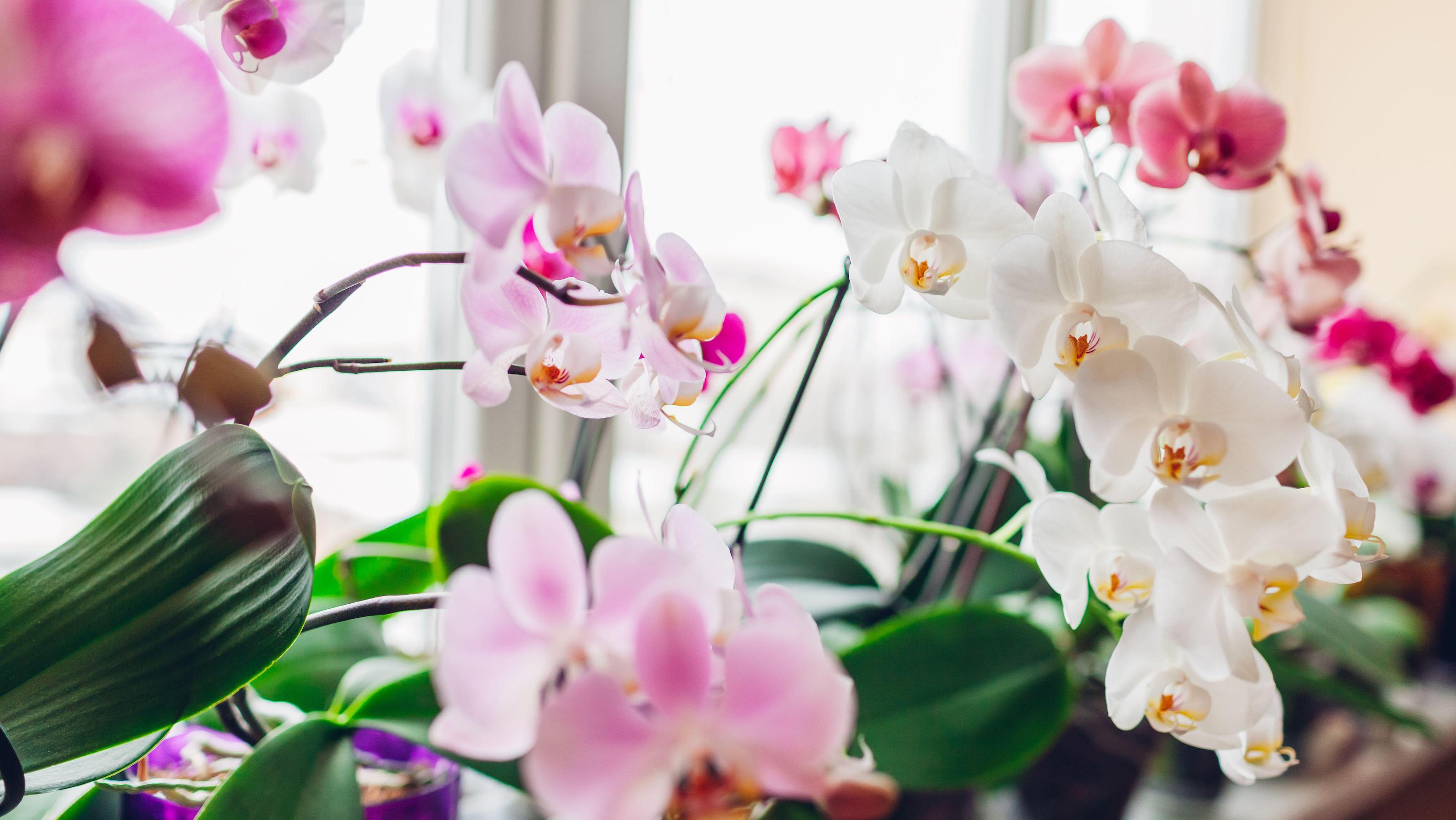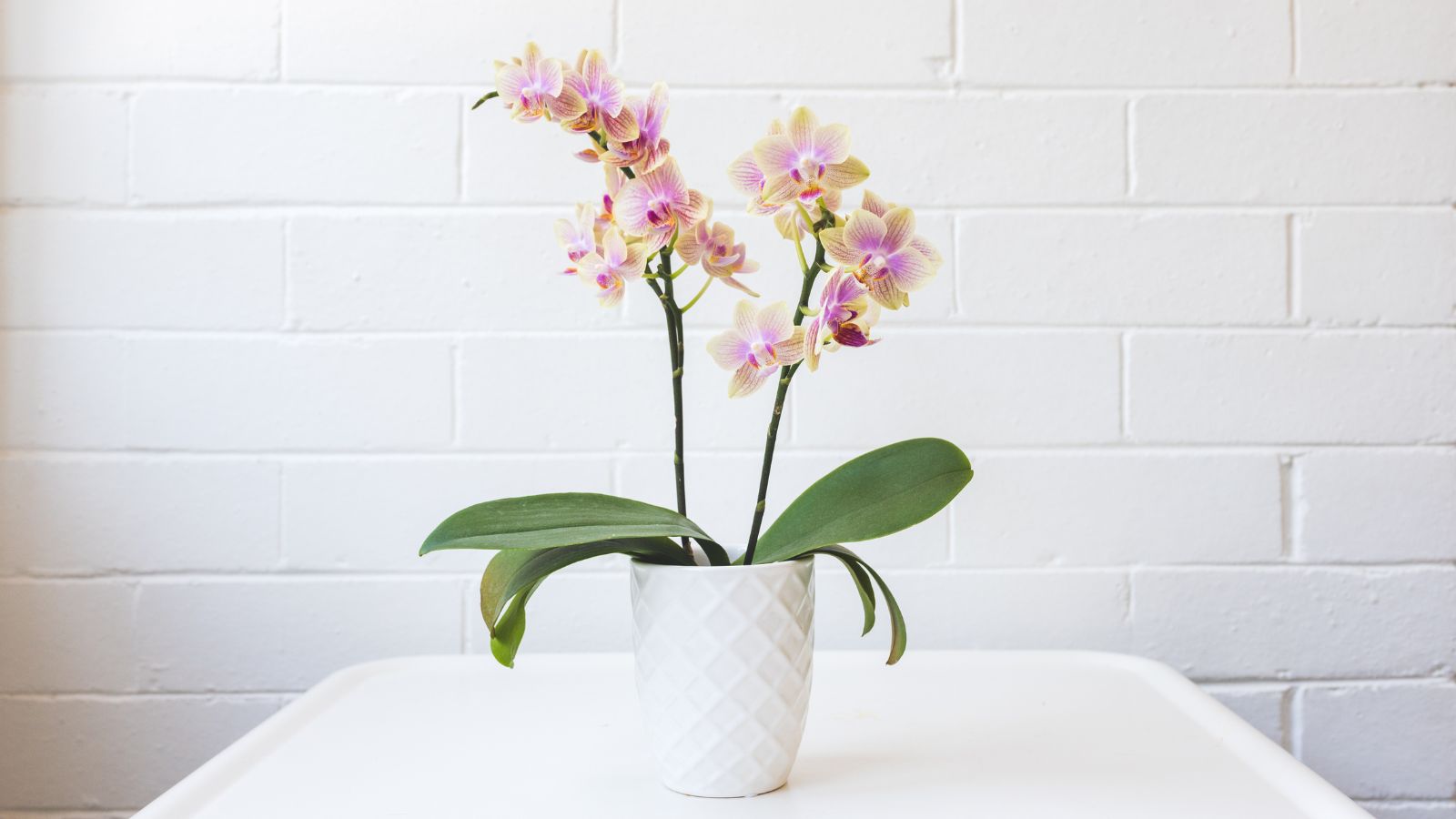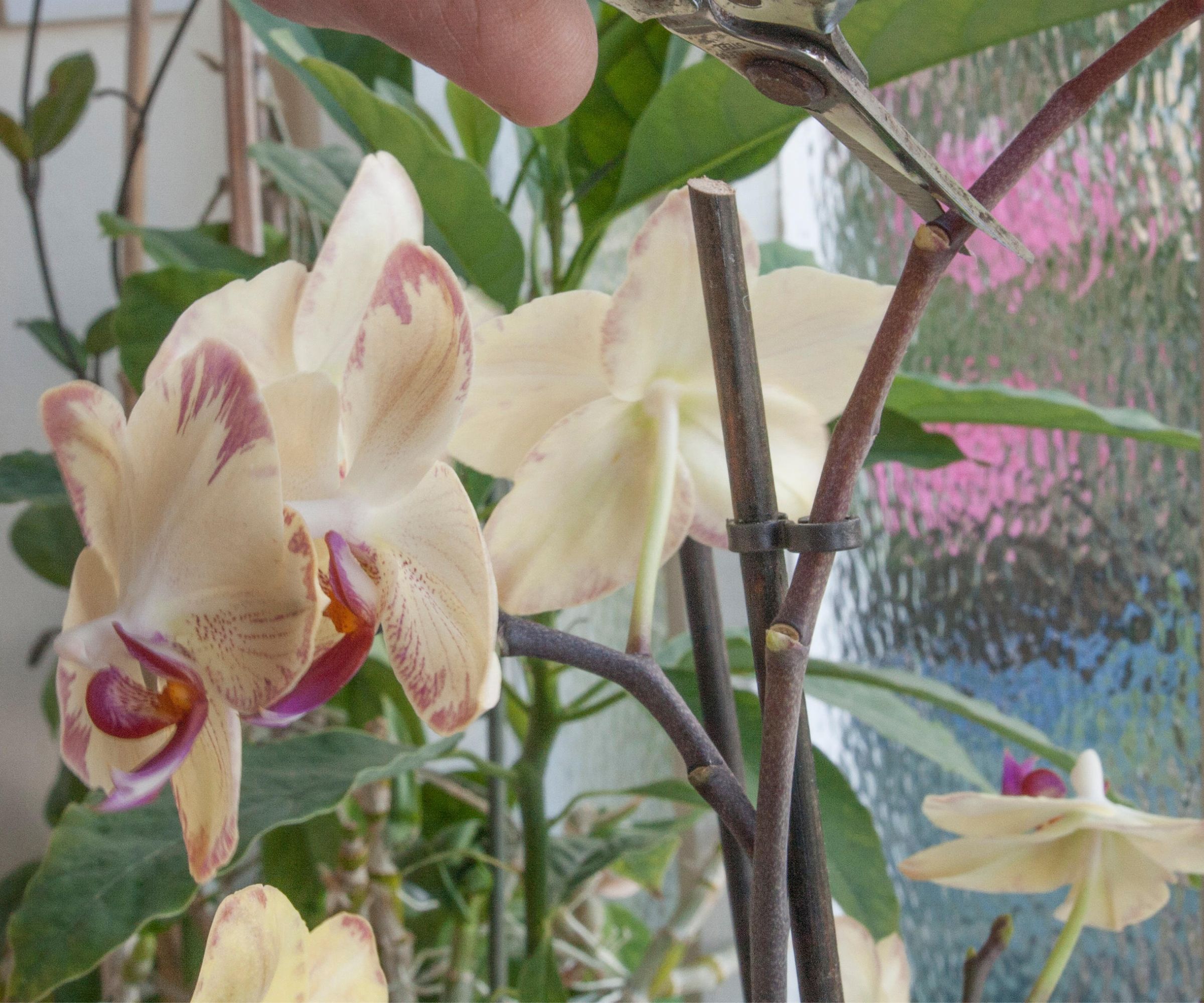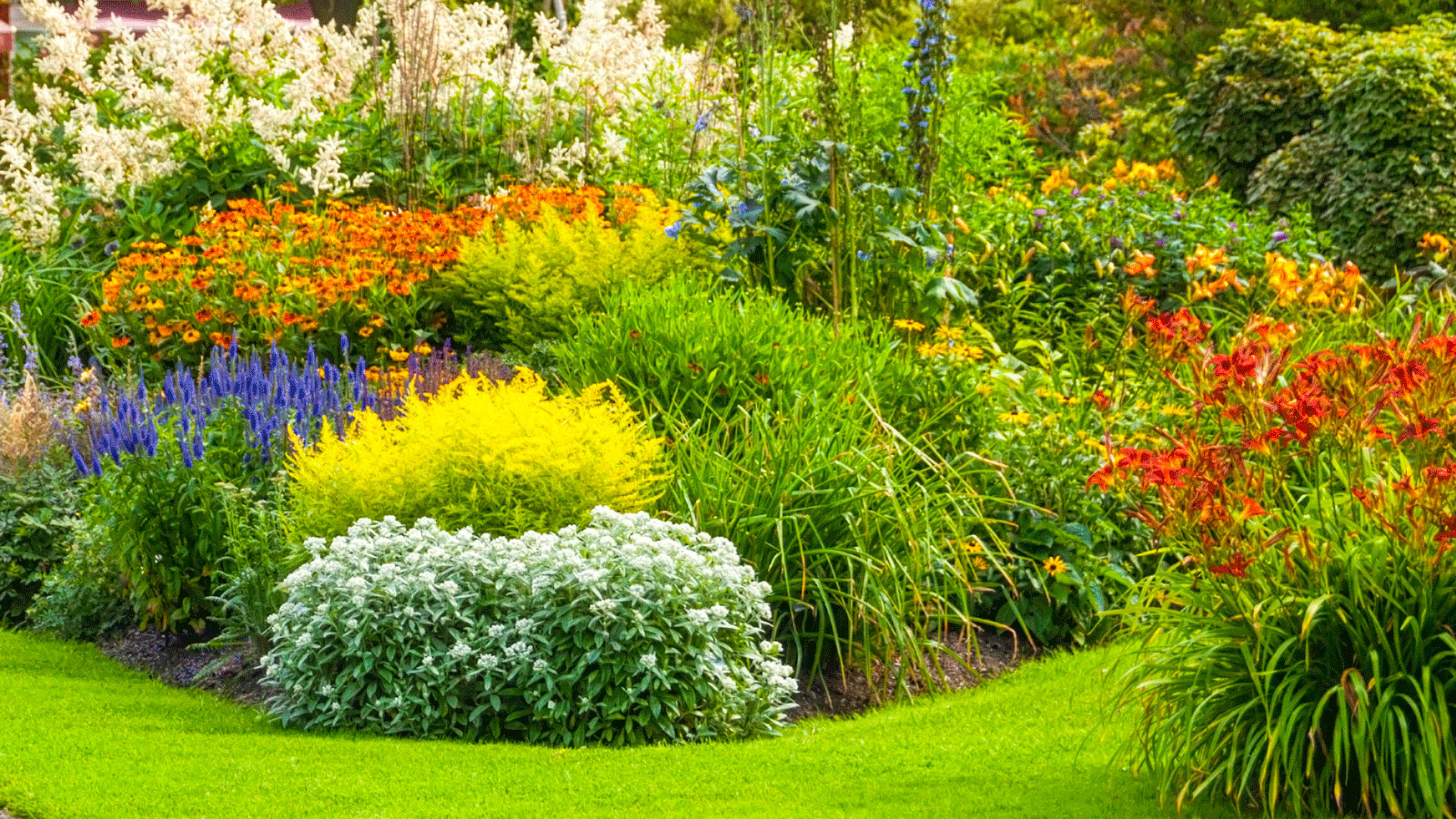Why is my orchid stem turning yellow? Here's why
If you're wondering 'why is my orchid stem turning yellow?' the answer is simpler than you might think


Why is my orchid stem turning yellow? This is a question that many orchid growers – both experienced and beginners – will ask at some point.
One of the most popular houseplants to grow, orchids are easy to maintain so long as they are provided with the correct conditions.
You need to ensure that these beauties from the tropics enjoy the best light and temperature and that you water them carefully, and they will reward your care and attention with their distinctive, beautiful blooms in myriad colors.
But even if you follow all of the advice on orchid care, you might still be faced with their stems turning yellow. So why is this, and should it be a cause for concern? Read on to find out ...


Rachel is senior content editor, writing and commissioning gardening content for homesandgardens.com. From investigating the finer points of pruning to exploring the secrets of house plant care, she researches and calls upon the expertise of horticultural experts far and wide to answer the burning queries of the green-fingered fraternity
Why is my orchid stem turning yellow?
There is no denying that orchids are among the best indoor flowering plants – and deservedly so.
'Orchids are the #1 houseplant and have been for quite some time. They are so popular that they are even found in grocery stores,' agrees Art Chadwick of Chadwick & Son Orchids Inc of Powhatan, Virginia.
So it can be a little disheartening when, after you've nurtured them for months on end, positioned them in a prime spot, and carefully researched how to water orchids correctly, to find their stems looking less than healthy..
'Why is my orchid stem turning yellow? Is it something I have or haven't done right?' you may be asking yourself. There are also a number of reasons for an orchid wilting.
'We get a lot of questions from new enthusiasts about orchid care. In most cases, an orchid stem turns yellow because the flowers have finished blooming. No need to panic as this is the normal course of action,' advises Art.
So you can relax in the knowledge that it is probably not due to lack of or overzealous care on your part as the reason for the orchid stem turning yellow – it's just part of the plant's natural life cycle.
'If the orchid is sympodial, such as a Paphiopedilum or Phragmipedium orchid, it is normal for the old stem to be yellow as it dies back after blooming. If the plant is healthy, there should be evidence of new stems growing from the base,' explains advises Amy Malin, secretary of the Orchid Society of Great Britain.
That said, 'if the orchid spike has not yet bloomed but is starting to yellow, this could be a sign of nutrient deficiency, stress, rot, or cold damage. In this case, I would take a look at the entire plant, its circumstances, and its surroundings. Does the plant have healthy green leaves and a good root system? Is it a recent purchase that may have undergone transport stress? Is orchid fertilizer used on the plant? If it is close to a door or a drafty window, try moving it further away,' Amy adds.
'If it is a monopodial orchid, for instance, a Phalaenopsis, which grows from one single stem, the yellowing could be caused by too much direct light, in which case the orchid would need to be moved to an area with a more indirect light source. This is likely if the yellowing only appears on the side of the orchid closest to the window,' Amy continues.
'If the affected area feels mushy, it is likely to be a rot issue. Rot can be treated by removing affected leaves and applying ground cinnamon to affected areas of the stem. It is a good idea to check the orchid's crown, leaves, and roots for an indication of what the problem could be. If there is evidence of pests, the yellowing could be caused by pest damage.'
Should I cut off the yellow stem on my orchid?
Yes, you should cut off the yellow stem on your orchid as it will not produce any more flowers.
'When the flowers have finished on an orchid, the flower stem will naturally start to die off and turn from green to yellow, to brown. So it is just the stem naturally dying back and can be trimmed right down to the base,' advises Sara Rittershausen of orchid specialists Burnham Nurseries.
This is how to get an orchid to rebloom, but be careful when you do trim the stems, and ensure you know how to prune orchids so that you don't snip off more than you should.
'If the orchid is a Phalaenopsis orchid and the spike has only just begun to yellow from the top, you can try cutting off the yellowing part. If there are still healthy available nodes on the spike, it may produce a secondary spike,' explains Amy Malin.
'The plant will take a break from flowering to grow some new leaves and then will produce a brand new stem from the base when ready, given the correct culture,' Sarah Rittershausen adds.
In some cases, it might also be necessary to repot orchids at the same time.

Will my orchid grow a new stem?
The simple answer is that yes, your orchid will grow a new stem and have a second lease of life.
'Orchids are the ultimate perennial in that they come back into bloom year after year – forever – if taken care of. My father had many plants over a century old, with detailed records of their annual blooming cycles,' advises Art Chadwick of Chadwick and Son Orchids.
Patience is the key when growing orchids. 'It is a waiting game for the grower, as most orchids bloom for several months and come back into bloom in about a year,' adds Art.
So next time a fellow orchid fan asks you 'Why is my orchid stem turning yellow?' you can put their minds at ease and share your newfound knowledge.
Sign up to the Homes & Gardens newsletter
Design expertise in your inbox – from inspiring decorating ideas and beautiful celebrity homes to practical gardening advice and shopping round-ups.
Rachel is senior content editor, and writes gardening content for homesandgardens.com, Homes & Gardens magazine, and its sister titles Period Living Magazine and Country Homes & Interiors. She has written for lifestyle magazines for many years, with a particular focus on gardening, historic houses and arts and crafts, but started out her journalism career in BBC radio, where she enjoyed reporting on and writing programme scripts for all manner of stories. Rachel then moved into regional lifestyle magazines, where the topics she wrote about, and people she interviewed, were as varied and eclectic as they were on radio. Always harboring a passion for homes and gardens, she jumped at the opportunity to work on The English Home and The English Garden magazines for a number of years, before joining the Period Living team.
-
 5 freezer cleaning mistakes you must avoid – or risk compromising your food quality and shortening the lifespan of your appliance
5 freezer cleaning mistakes you must avoid – or risk compromising your food quality and shortening the lifespan of your applianceAvoid these blunders for a safer kitchen
By Seraphina Di Mizzurati
-
 What is an island bed? This clever garden design trick can add privacy and drama to any backyard
What is an island bed? This clever garden design trick can add privacy and drama to any backyardCreate a long-lasting, low-maintenance and visually appealing island bed that also serves a purpose in the garden
By Sarah Wilson